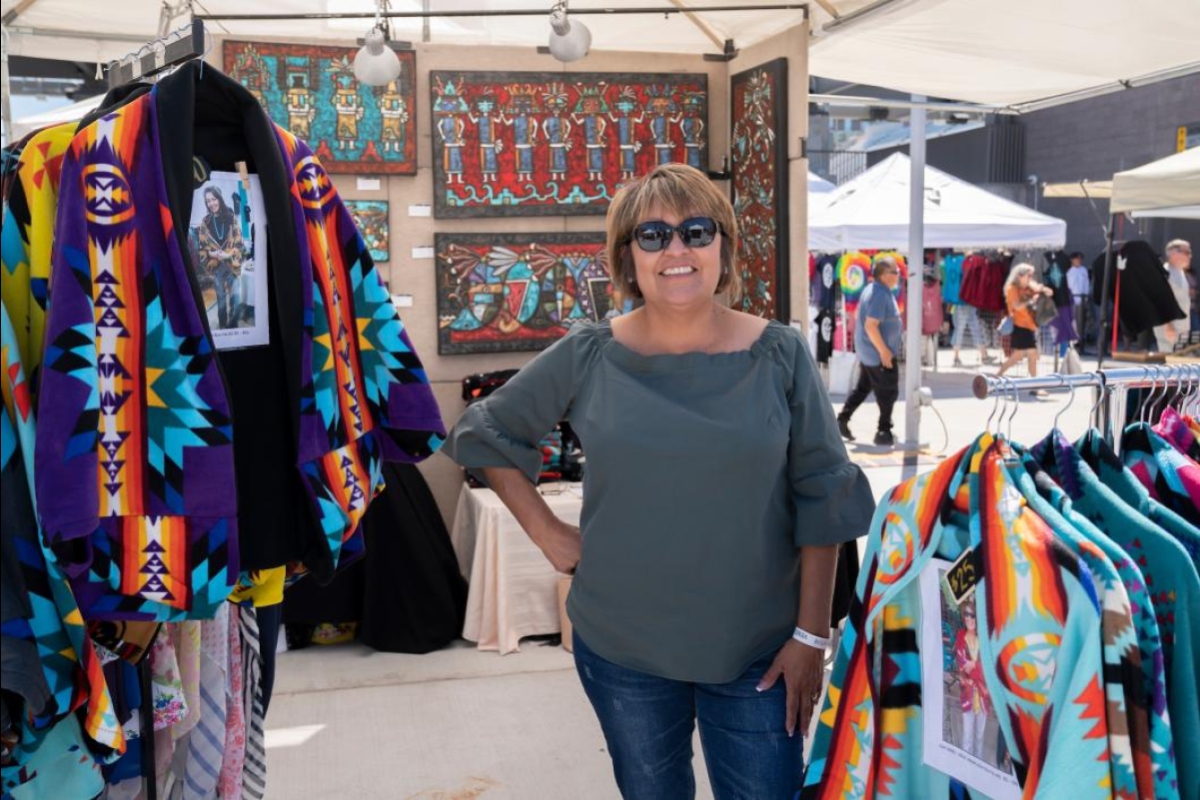Thousands of people jammed Sun Devil Stadium this weekend to cheer for their home team, but it wasn’t for a football game or sporting event.
They were cheering for dancers and singing groups from Apache, Hopi, Navajo and other tribes who came from as far away as Canada to participate in the 33rd annual Pow Wow at Arizona State University, held April 12–14.
It was the first time the eventThe word “powwow” — which is spelled as both one and two words — comes from the Algonquin word “pau wau,” which was used to describe medicine men and spiritual leaders. It is a social gathering held by many different Native American communities to meet, dance, sing, socialize and celebrate their culture. had been held at the stadium since its inaugural year in 1986, according to ASU’s Annabell Bowen.
"We're very excited to bring the Pow Wow back to Sun Devil Stadium because over the years we've grown so much and our site has become too small," said Bowen, director for the American Indian Initiatives Office. "The stadium brings a new excitement level to this event."
Bowen credits its new partnership with ASU 365 Community Union for the timely move; the initiative is trying to utilize the venue more than the eight days a year the football team has home games.
“We’re in our pilot year right now, and we’ll end up hosting over 70 events this first year,” said Victor Hamburger, senior director of strategic initiatives for ASU Cultural Affairs. “We should be able to increase stadium utilization by (up to) 500% this year.”
Hamburger added that the university sees the stadium as a cultural hub and will host meetings, farmers markets, conferences, movies, meals, concerts and more. He said the ASU Pow Wow will be the largest ASU 365 Community Union event held this year at the stadium.
That’s music to Tahnee Baker’s ears, an ASU alumna and ASU Pow Wow coordinator.
“We outgrew the space at the ASU Band Practice field several years ago, but we continued to make it work because that’s all that was available,” said Baker, who approached the ASU 365 Community Union committee in December 2018 to host the event at Sun Devil Stadium. “To bring it to the stadium allows more people to celebrate our culture.”
Continuing the ASU Pow Wow is important to Baker, whose father, Lee Williams, started the tradition at the university and served as coordinator for decades until his passing in 2013.
“For him, this was a way to let American Indian students know there was a place for them on campus and to be proud of who they are,” Baker said. "He would be very happy to know this event has not only carried on but has grown in size and stature."
The contemporary Pow Wow is a link to the past that helps maintain her Navajo heritage, said Paige Sandoval, whose 8-year-old daughter, Rae Bighorse, danced several times this weekend.
“We grew up on the powwow circuit, and our entire family danced and sang at these events,” Sandoval said. “I'm now passing that tradition on to my daughter.”
Tempe resident Albert Polk, who is Apache and Quechan, also dances whenever he can.
“I’m always working, but I dance when I have time off,” said Polk, who performed in the Men’s Grass dance, which originated in the warrior societies in the Northern Great Plains. “It’s nice to see family and friends. I also come for the food.”
In addition to approximately 300 dancers and singers wearing traditional regalia and paying homage to their ancestors, the weekend-long event also included the crowning of Mr. and Ms. Indian ASU, as well as vendors selling Native American jewelry, crafts, clothes, rugs and traditional fry bread.
Calandra Etsitty was one of about 50 vendors on hand. She drove six hours on Saturday from Many Farms, Arizona, in the Navajo Nation to sell and promote her Winston Paul line of products, which includes custom jewelry, makeup bags, traditional skirts and reconstructed garments. She liked the venue because of its size and space, and also because it exposed her 2-year-old business to a new demographic.
“It’s an older crowd and I like that,” Etsitty said. “It’s good for our elders to know we’re doing something good and productive with our lives.”
Mekwaike Ojibwe tribe member Lara Lasley was dressed in lavender-colored regalia on Saturday. The 17-year-old said she made the trip from Lake Elsinore, California, to participate in the “Fancy Shawl” with about 20 other tribe members.
Lasley has participated in the ASU Pow Wow in the past but had never seen the inside of Sun Devil Stadium before.
“I didn’t mind being at the old venue,” she said, "but this is a step up.”
Top photo: Participants of the Grand Entry at the Pow Wow at ASU. Photo by Marcus Chormicle/ASU Now
More Sun Devil community

Biochemistry graduate finds his path, and a future in pharmacy, through versatility of ASU degree
Math and science have always clicked differently for Parker Henmi.This December, the biochemistry major will graduate from ASU’s School of Molecular Sciences with a clear goal: to channel those…

PhD grad chased her dreams while navigating family and work
A former public school teacher, Mariana Silva has always had a passion for helping kids, especially bilingual children who have or are at risk for a developmental language disorder.So when she…

Industrial design graduate is turning big ideas into real-world impact
From working with Mayo Clinic to converting agricultural waste into biodegradable materials, Malek Attar wants to use design to create a more sustainable future and to improve the quality of…




